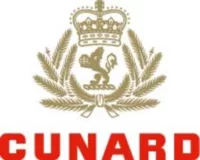
Cunard Line
The age of elegance lives on aboard Cunard's impressive fleet, with white-gloved afternoon teas, grand staircases, exuberant cabins and formal galas in elegant restaurants.
Now that Cunard has observed the centenary of its pioneering world cruise, the famous mantra of dignified excellence has intensified to create not just one of the greatest cruise experiences, but the finest travel money can buy.
2996
Passengers
1225
Crew
2024
Launched
113000t
Tonnage
322m
Length
34m
Width
24kts
Speed
14
Decks
Cruise Itinerary
Ship Details


Cunard Line
Queen Anne
Queen Anne’s breathtaking interiors take inspiration from our past to define a striking new design direction for our future. Come on board to discover a ship that is modern, yet timeless. A ship that offers both exciting, novel experiences, as well as our much-loved signature venues.
Cabins
All Prices










